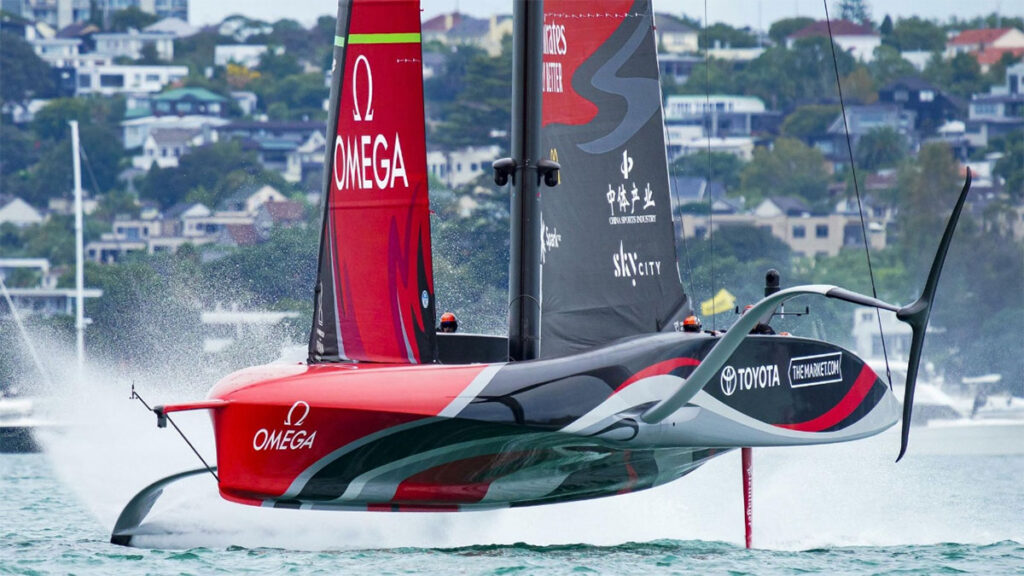As business leaders look for new ways to use AI technology to create competitive advantages, we saw a fascinating example of how an AI-based system can provide a dramatic advantage in sports – propelling the Emirates Team New Zealand to win the 2021 America’s Cup.
Here’s how Team New Zealand used Reinforcement Learning (RL) to test design concepts, and how other businesses are using RL for high-impact applications.
Team New Zealand created a digital simulator, in which a trained AI agent could sail a boat, so that they could test different boat designs under changing simulated conditions. The AI agent was powered by Reinforcement Learning (RL), a type of AI system that learns from trial and error. In the case of Emirates Team New Zealand, the AI-powered simulator enabled them to test thousands of design concepts vs. just hundreds (a 10-fold increase) to more find the optimal design and win the race.

Photo: Sky sports
Reinforcement Learning
Reinforcement Learning is an exciting AI technology that helps solve complex problems in dynamic environments where variables change in unpredictable ways. With RL, AI agents are trained to perform actions within a simulated environment and receive rewards when they take the ‘right’ action. RL works to find the sequence of actions that maximize the cumulative rewards it receives. The strength of RL is that the system adapts to changes on its own without requiring human involvement.
Business Applications
Perhaps the most talked about application of RL today is to guide self-driven cars and long-haul trucks. However, there are many business scenarios which could be better optimized using RL. Examples of high-impact business applications for RL include:
- Accelerating design and product development
- Optimizing complex operations
- Orchestrating customer interactions – i.e., determining the next best action for each customer
The primary requirements to build a RL system that improves business performance include:
- Rewards function – which enables an agent to take an action now to maximize rewards from optimal outcomes
- Simulator environment – where the AI agent can digitally simulate real life actions millions of times to learn best courses of action
- Computing power – which is now attainable for most companies enabling an agent to distribute thousands of complex jobs so they can be run in parallel
Decision engines that already use an expected value optimization function, such as some next best action recommender engines, can be enhanced to include RL capabilities that automatically update model algorithms as new outcome data is available.
With 84% of business executives believing they need to use AI to achieve their growth objectives,* it is hard to imagine a more exciting development in business than the ability to deploy AI that trains itself and transforms the world’s many models into self-learning systems that can be deployed across the enterprise.
* “AI: Built to Scale” Accenture, November, 2020
https://www.accenture.com/us-en/insights/artificial-intelligence/ai-investments
© 2021 Galahad Group Inc.
